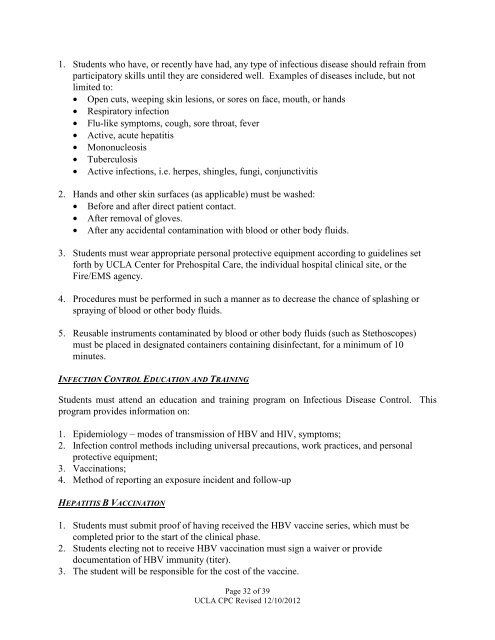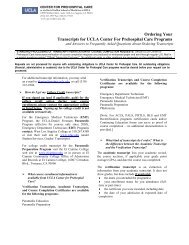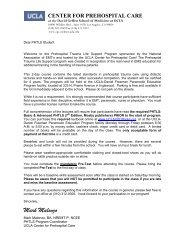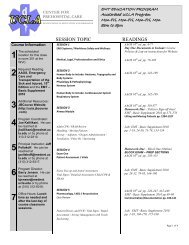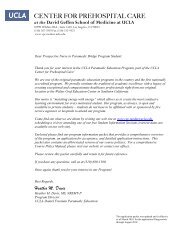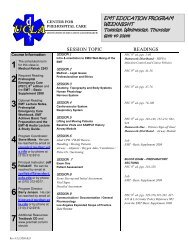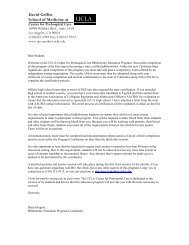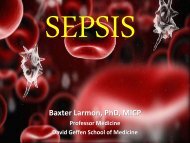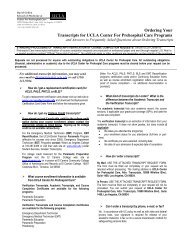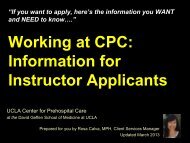EMT Policies (pdf) - UCLA Center for Prehospital Care
EMT Policies (pdf) - UCLA Center for Prehospital Care
EMT Policies (pdf) - UCLA Center for Prehospital Care
Create successful ePaper yourself
Turn your PDF publications into a flip-book with our unique Google optimized e-Paper software.
1. Students who have, or recently have had, any type of infectious disease should refrain from<br />
participatory skills until they are considered well. Examples of diseases include, but not<br />
limited to:<br />
• Open cuts, weeping skin lesions, or sores on face, mouth, or hands<br />
• Respiratory infection<br />
• Flu-like symptoms, cough, sore throat, fever<br />
• Active, acute hepatitis<br />
• Mononucleosis<br />
• Tuberculosis<br />
• Active infections, i.e. herpes, shingles, fungi, conjunctivitis<br />
2. Hands and other skin surfaces (as applicable) must be washed:<br />
• Be<strong>for</strong>e and after direct patient contact.<br />
• After removal of gloves.<br />
• After any accidental contamination with blood or other body fluids.<br />
3. Students must wear appropriate personal protective equipment according to guidelines set<br />
<strong>for</strong>th by <strong>UCLA</strong> <strong>Center</strong> <strong>for</strong> <strong>Prehospital</strong> <strong>Care</strong>, the individual hospital clinical site, or the<br />
Fire/EMS agency.<br />
4. Procedures must be per<strong>for</strong>med in such a manner as to decrease the chance of splashing or<br />
spraying of blood or other body fluids.<br />
5. Reusable instruments contaminated by blood or other body fluids (such as Stethoscopes)<br />
must be placed in designated containers containing disinfectant, <strong>for</strong> a minimum of 10<br />
minutes.<br />
INFECTION CONTROL EDUCATION AND TRAINING<br />
Students must attend an education and training program on Infectious Disease Control. This<br />
program provides in<strong>for</strong>mation on:<br />
1. Epidemiology – modes of transmission of HBV and HIV, symptoms;<br />
2. Infection control methods including universal precautions, work practices, and personal<br />
protective equipment;<br />
3. Vaccinations;<br />
4. Method of reporting an exposure incident and follow-up<br />
HEPATITIS B VACCINATION<br />
1. Students must submit proof of having received the HBV vaccine series, which must be<br />
completed prior to the start of the clinical phase.<br />
2. Students electing not to receive HBV vaccination must sign a waiver or provide<br />
documentation of HBV immunity (titer).<br />
3. The student will be responsible <strong>for</strong> the cost of the vaccine.<br />
Page 32 of 39<br />
<strong>UCLA</strong> CPC Revised 12/10/2012


